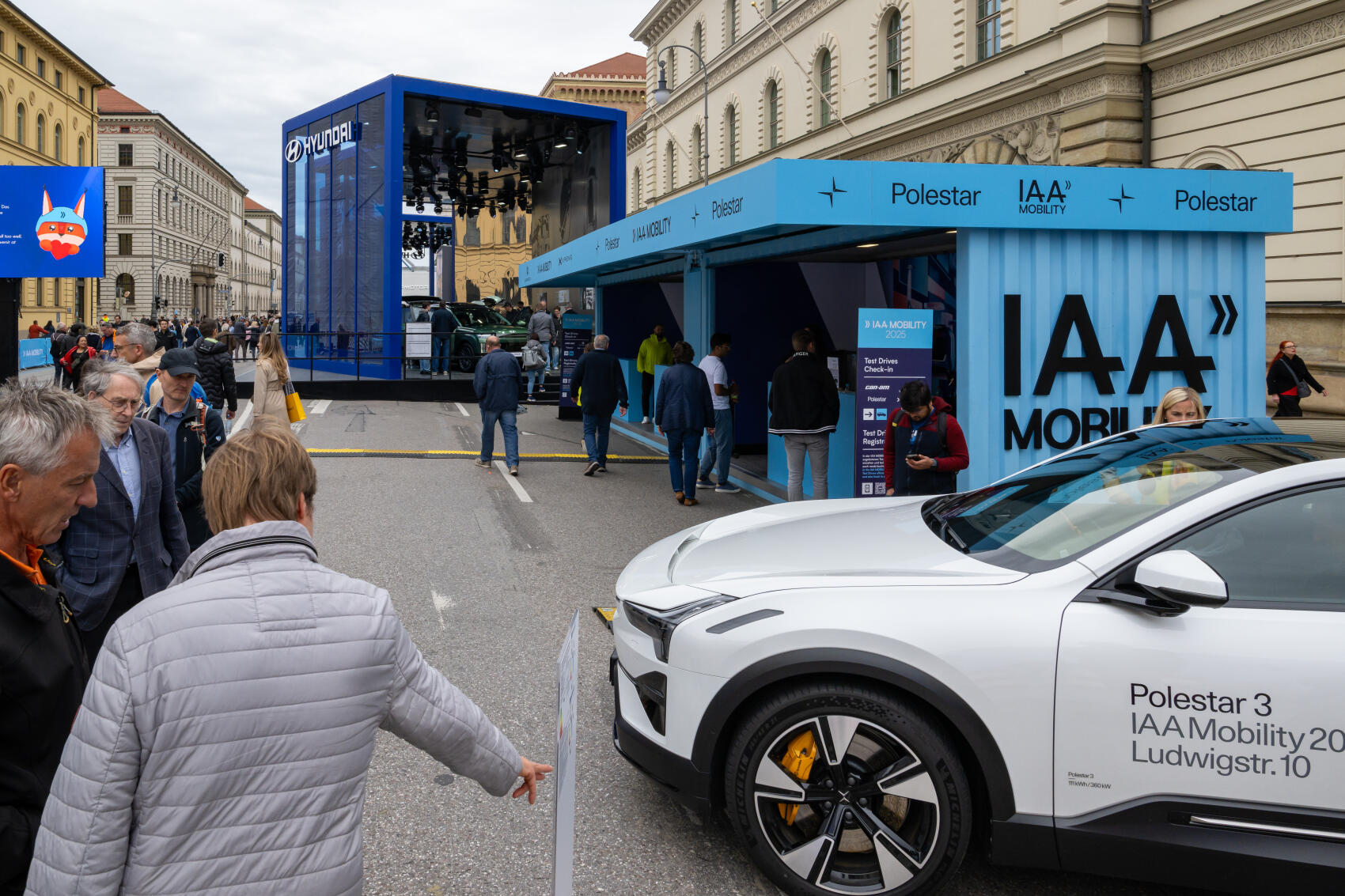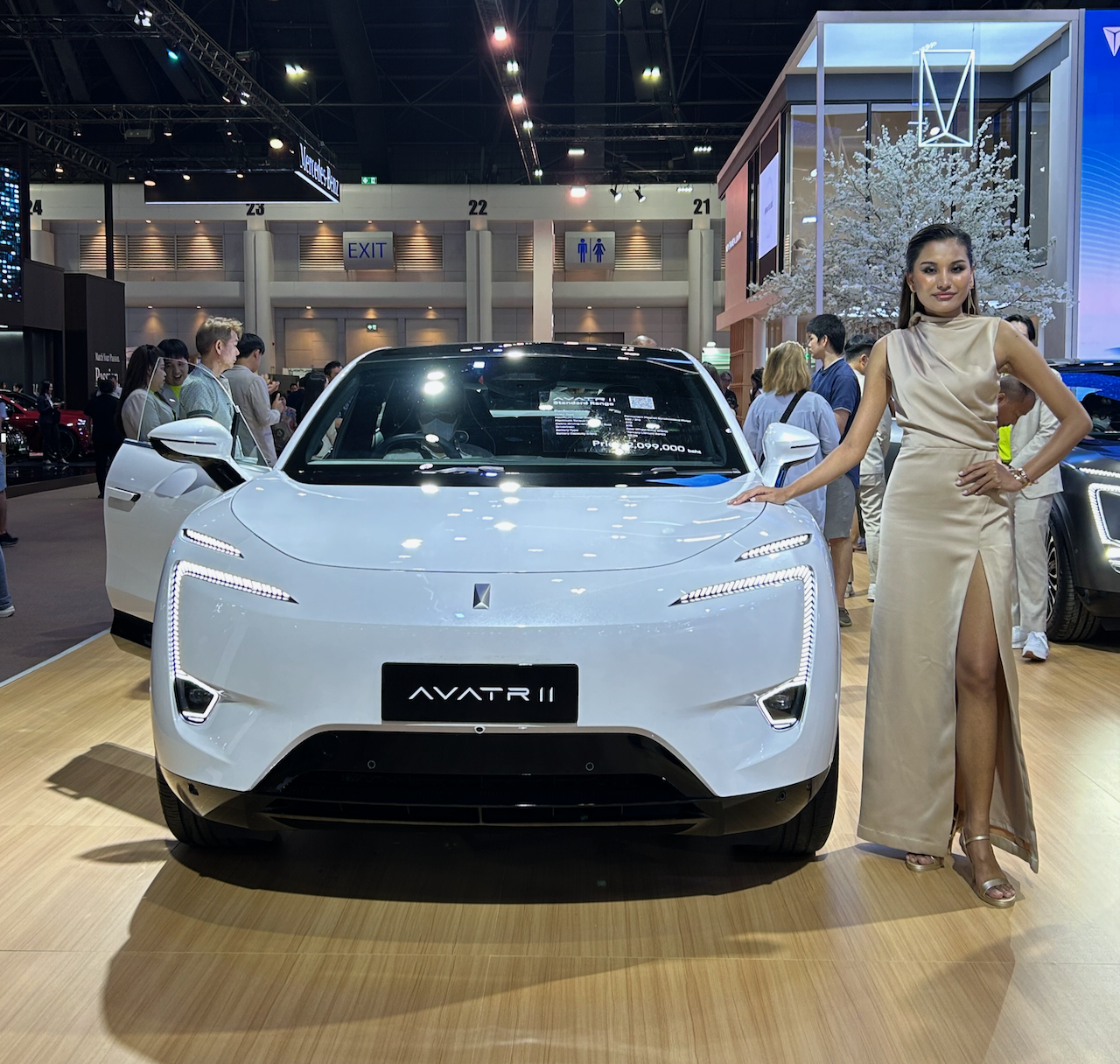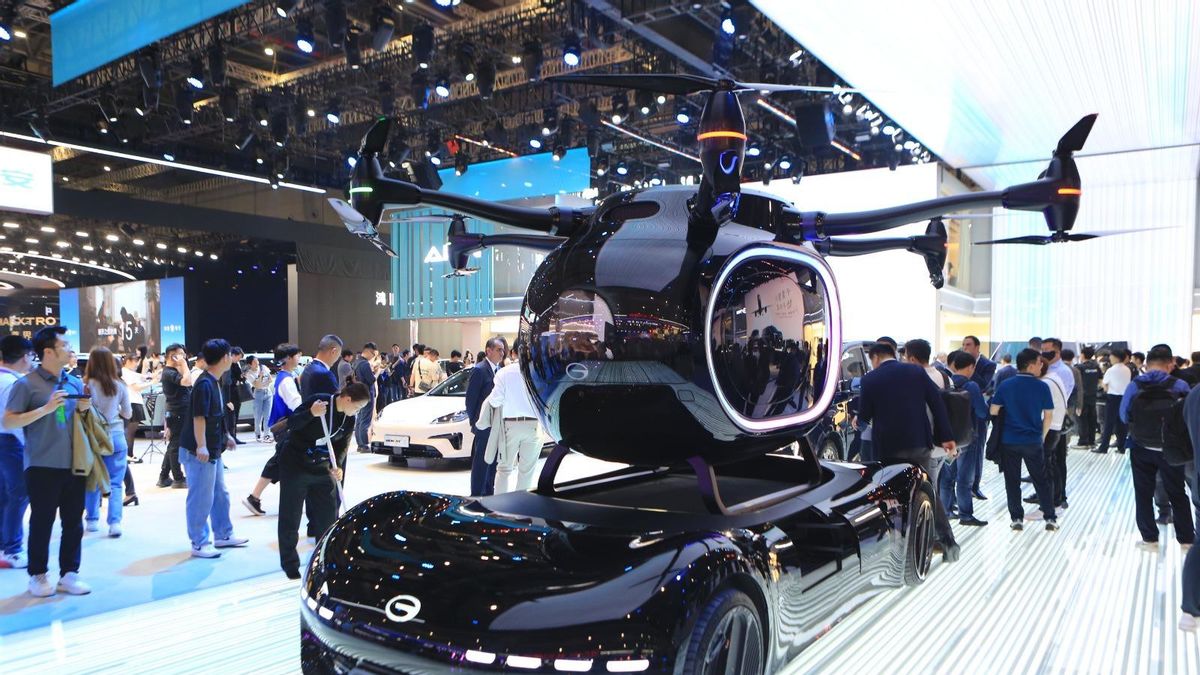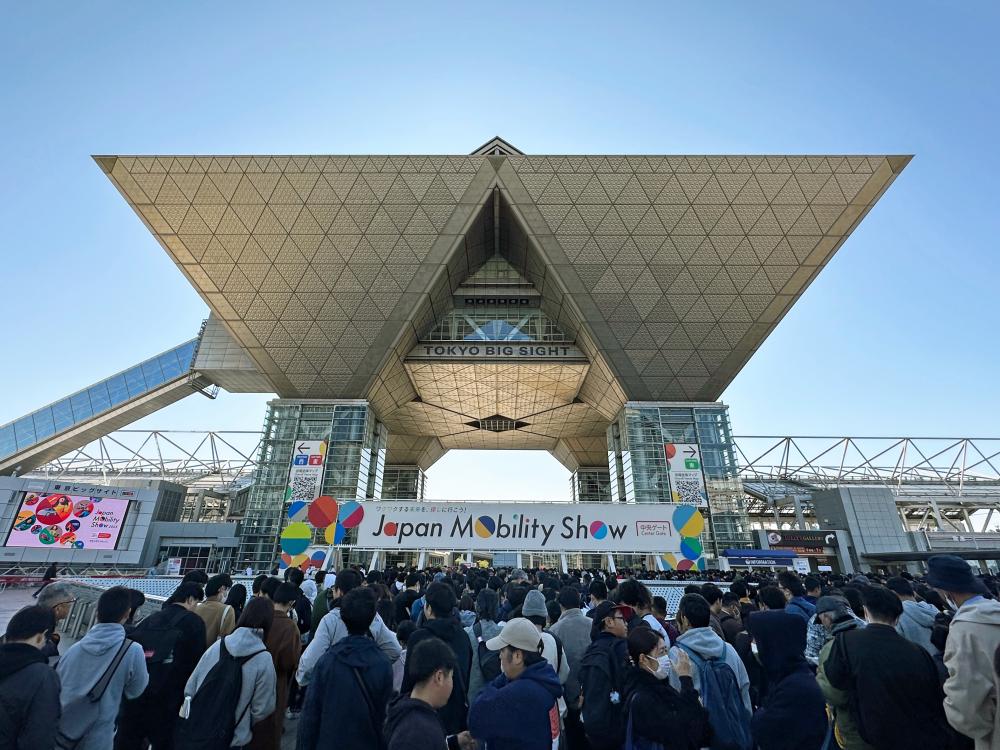
Japan Mobility Show 2025 reveals Japanese automakers dominating the exhibition with innovative concepts across land, sea and air, as global participation wanes.

Drivetech Partners
The Japan Mobility Show 2025 showcased a evolution of the automotive landscape with Japanese manufacturers dominating the exhibition while expanding beyond traditional vehicle categories. The event highlighted next-generation mobility experiences, Toyota's commanding presence alongside Honda and Nissan's renewed focus, with limited international participation revealing shifting industry dynamics as mobility concepts extend into marine, aviation, and lifestyle-integrated transportation solutions.
Key Takeaways
Japanese dominance was evident with 10 domestic OEMs exhibiting while international presence was minimal - only BYD from China and Mercedes plus BMW/Mini from Europe
The show demonstrated a clear shift toward lifestyle-integrated mobility with car-as-living-room concepts featuring gaming and entertainment systems with integrated EE systems based on zonal computing architectures
Toyota Chairman Akio Toyoda issued a stark warning about Japan's fading innovation culture, stating "The 'Japan as No 1' era is behind us"
Honda showcased its electric future with the innovative 0 α Prototype and expanded beyond automotive with marine, aviation, and space mobility concepts
Despite corporate challenges, Nissan attracted crowds with its new Leaf and fourth-generation Elgrand premium minivan
Mazda showcased microalgae-based carbon-neutral fuel and new ways to integrate drivers with AI-based automotive OS systems
Japanese Dominance with Limited International Presence
JMS 2025 transformed Tokyo's Big Sight exhibition center into a showcase of Japanese automotive prowess. Subaru, Suzuki, Toyota, Nissan, Honda, Mazda, Mitsubishi, Lexus, Century, and Daihatsu filled the halls with passenger vehicles, demonstrating the full spectrum of Japan's automotive ecosystem. The motorcycle section reinforced this dominance, featuring Honda, Suzuki, Kawasaki, and Yamaha's latest innovations.

International representation was notably sparse. BMW/Mini and Mercedes-Benz stood as the only European exhibitors, while BYD single-handedly represented China's growing automotive sector and Hyundai/Kia showcased Korea. The complete absence of American manufacturers reflected a strategic focus by Japanese organizers on domestic strength in their home market.
Attendance figures confirmed the show's continuing appeal, with the Japan Automobile Manufacturers Association (JAMA) projecting over one million visitors throughout the event. The packed exhibition halls each day demonstrated that despite industry shifts toward digital launches and virtual experiences, physical automotive showcases still command significant public interest.
Evolving Mobility Experience: Mobile Living Spaces, Entertainment and Connectivity
A prominent theme throughout JMS 2025 was the transformation of vehicles from transportation devices into mobile living spaces. Sharp, Honda, Kia, Toyota and Mercedes all demonstrated room-like in-car entertainment systems complete with video streaming and gaming capabilities.
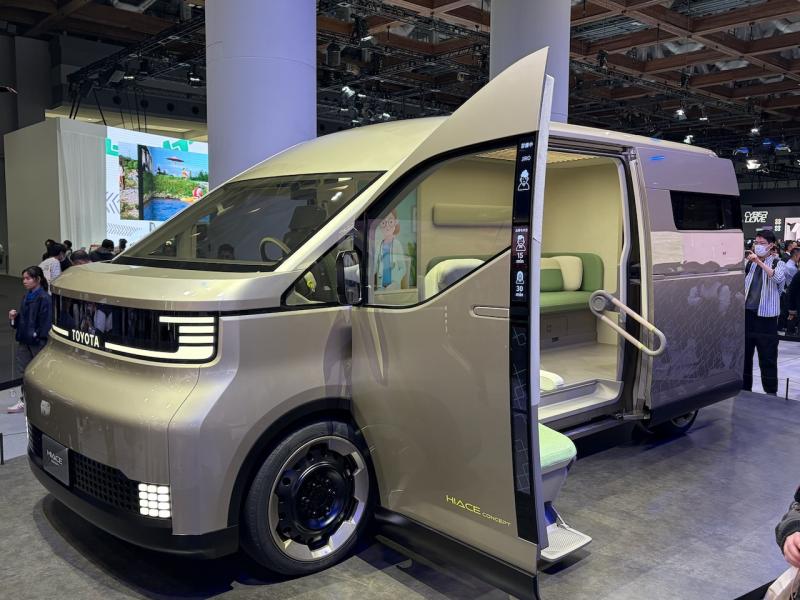
Notable OEMs like Toyota, Nissan and Honda presented immersive in-car infotainment systems integrating streaming entertainment and gaming, creating a rich, interactive passenger experience. Vendors such as SeiRogai introduced innovative VR-based platforms like “Global Virtual Travel,” which blend location-based interactive content, e-commerce, and real-time bookings to transform travel time into engaging, immersive experiences.
On the technology side, suppliers like DENSO and Bosch demonstrated next-generation E/E architectures centered around zonal and centralized computing. These architectures support software-defined vehicles (SDVs) by consolidating multiple ECUs into integrated platforms that enable over-the-air updates and AI-driven services. Astemo highlighted its advancements for the SDV era, encompassing both in-car and out-car technologies, including immersive theater experiences demonstrating safety and freedom.
The SDV platform evolution focused on flexible software-centric ecosystems integrating cloud connectivity, AI, and remote services. Bosch, for example, exhibited SDV solutions enabling adaptive, continuously upgradeable vehicle functionalities. Startups and technology vendors across the show emphasized open and scalable mobility platforms aimed at seamless software integration and enhanced digital lifestyles.
JMS2025 show highlighted a convergence of entertainment streaming and gaming enlivening the vehicle interior, cutting-edge zonal E/E architectures from DENSO and Bosch powering SDVs, and vendor-led SDV platforms fostering the future of connected, software-defined mobility. VR, AI, and cloud connectivity were key technology enablers showcased by vendors including SeiRogai, Astemo, DENSO, and Bosch. Next-generation connected car services featured prominently, with BMW and Hyundai showcasing advanced in-car gaming technology that transforms wait times into entertainment opportunities.

Hyundai's Insteroid concept took this idea to its logical conclusion - a vehicle reverse-engineered from a video game, blurring the line between virtual and physical mobility.
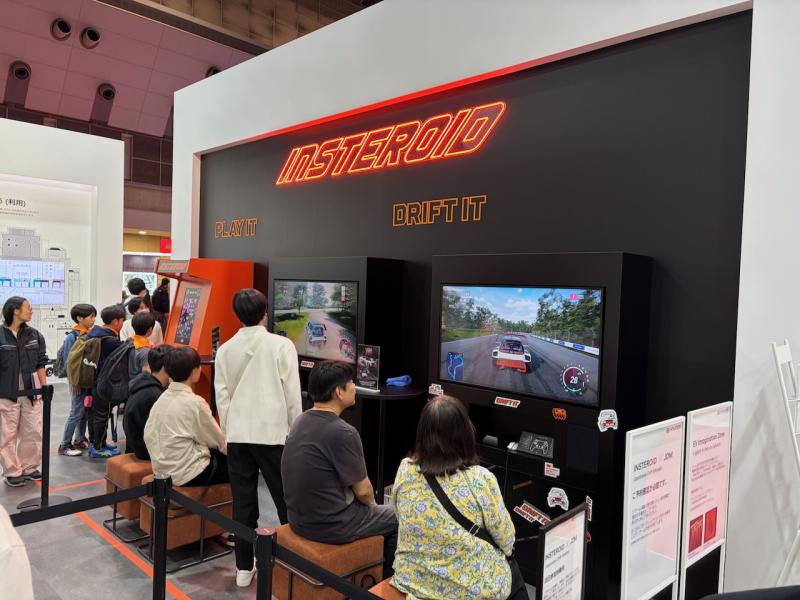
These innovations represent a fundamental shift in how manufacturers view the automotive experience. As autonomous driving technologies mature, the focus moves from driving dynamics to passenger experience - how people spend their time while being transported rather than the act of transportation itself.
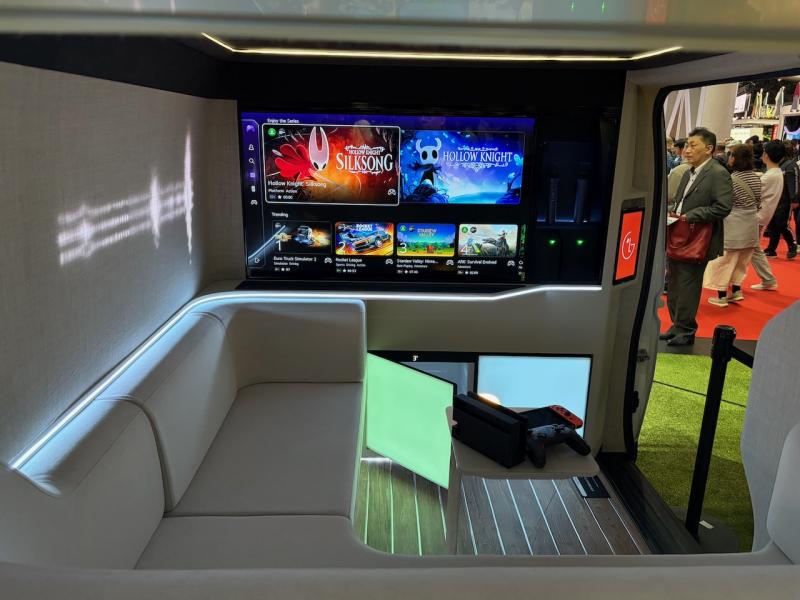
Notably absent from JMS 2025 were dedicated IoT and other service providers. This gap suggests these companies may be focusing their marketing efforts on consumer electronics shows like CES or telecommunications events like GSMA rather than traditional automotive exhibitions.
Toyota's Dominance and Chairman's Call for Innovation
Toyota's exhibit dominated the entire South Hall at Tokyo Big Sight, demonstrating the company's commanding market position. The expansive display encompassed Toyota's multi-brand strategy, with dedicated areas for Toyota, Lexus, Daihatsu, Century, and GR performance vehicles.
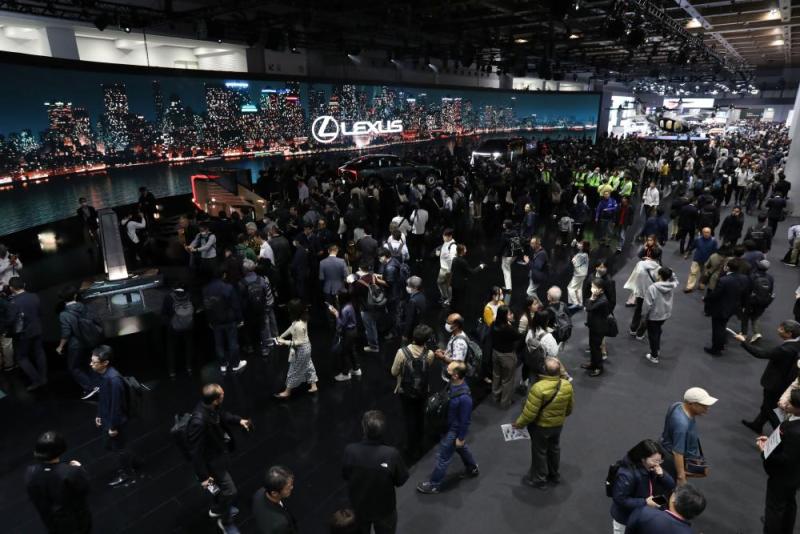
A notable moment came when Toyota Chairman Akio Toyoda delivered a sobering assessment of Japan's automotive industry. "The 'Japan as No 1' era is behind us, and we are now in what has come to be known as 'the lost 30 years'," Toyoda stated. His remarks highlighted concerns about Japan's fading "monozukuri" innovation culture and the urgent need for transformation as domestic production declines while Chinese competitors gain ground with software-defined vehicle technologies.
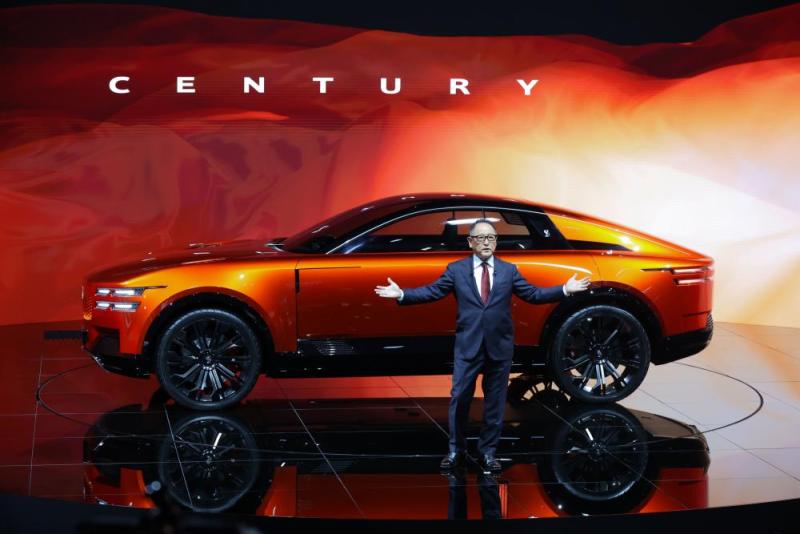
Toyota's product showcase balanced heritage with forward-looking concepts:
Century brand relaunch as a standalone luxury marque
The Corolla Concept emphasized personalized mobility, adapting to different lifestyles
IMV Origin presented a versatile platform for rural Africa, designed for local assembly and customization
Land Cruiser "FJ" expanded the iconic nameplate with enhanced off-road capabilities
Heritage displays including the Toyoda Model AA passenger car and Toyoda G1 Truck
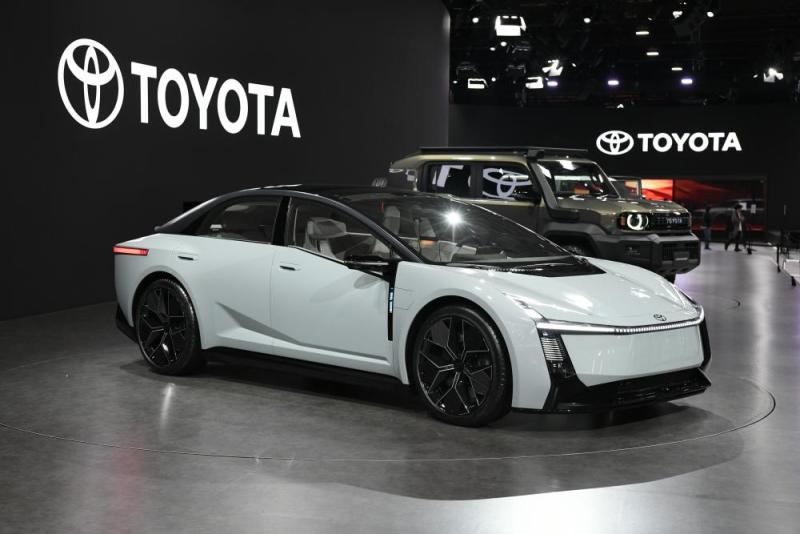
The Corolla Concept at Japan Mobility Show 2025 emphasized personalized mobility by adapting to diverse lifestyles and driving preferences. Toyota presented the Corolla as a multi-powertrain platform supporting EV, hybrid, plug-in hybrid, and combustion engines, enabling customers worldwide to have choices tailored to their needs. The design focuses on delivering a sportier, stylish, and more engaging driving experience that balances practicality and aesthetic appeal, signaling Toyota’s intent to create a vehicle that speaks directly to individual users rather than a one-size-fits-all approach.
The concept introduces what Toyota calls the “Multi-Pathway” approach—allowing flexibility in vehicle architecture and technology to suit various environments and customer requirements. The interior offers a spacious and comfortable environment despite the sportier exterior, supporting different uses from daily commuting to leisure, matching evolving lifestyles. This design philosophy was expressed under the broader show theme “TO YOU,” highlighting the idea of a vehicle crafted with personal customization in mind, reflecting buyers’ identities and preferences.

Meanwhile, Lexus showcased its vision of luxury mobility centered around the tagline “DISCOVER,” emphasizing individuality, freedom, and innovation without imitation. Lexus presented its flagship LS Concept as a “Luxury Space,” redefining vehicle interiors as personal sanctuaries that blend comfort, technology, and advanced connectivity to enhance the in-car experience. The brand highlighted cutting-edge digital and infotainment systems designed to create immersive environments tailored to user preferences, marrying aesthetics with high functionality. Lexus underscored its commitment to transforming luxury cars into adaptive, personalized spaces that offer new senses of freedom and self-expression, pushing beyond traditional luxury paradigms into a future-focused mobility experience.

Toyota went beyond automotive by showcasing aviation, nautical and personal micro-mobility solutions. Toyota Boshoku, part of the Toyota group, demonstrated innovation beyond vehicle platforms with the "Proximity" Immersive Sensory Seat, offering a 4D travel experience integrating visuals, sound, vibration, and motion. This technology highlighted Toyota's vision of mobility as an immersive, customizable experience rather than simply a means of transportation.
Honda's Expanded Presence and Electric Future
Honda significantly increased its footprint at JMS 2025, showcasing an ambitious electrification strategy alongside an expanded vision of mobility that stretched beyond automotive into marine, aviation, and even space exploration.
The centerpiece of Honda's display was the 0 α Prototype, part of the brand's innovative 0 Series of lightweight EVs built on the philosophy "Thin, Light and Wise." This radical reimagining of what an electric vehicle can be demonstrated Honda's commitment to fundamental design innovation rather than simply electrifying traditional platforms.
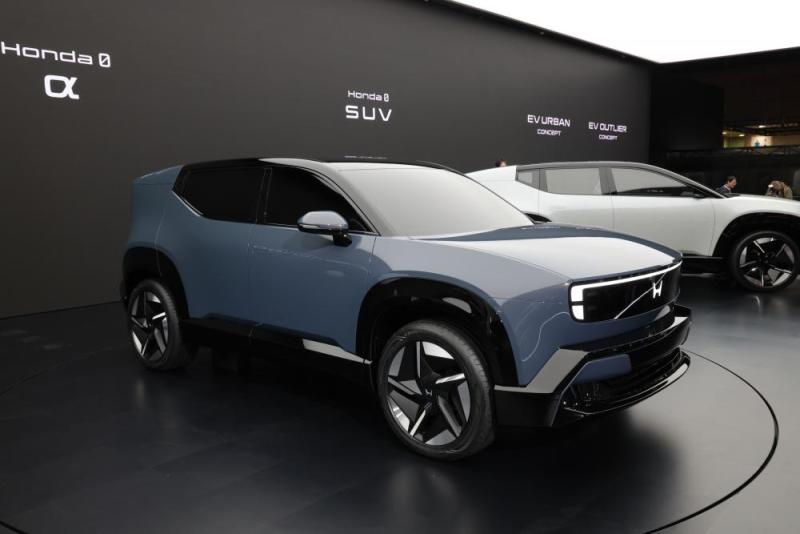
Other notable Honda debuts included:
Super-ONE Prototype - an electrified, performance-enhanced kei car with a new Boost Mode
EV URBAN and EV OUTLIER Concept motorcycles - exploring next-generation personal mobility
Acura RSX Prototype - targeting North American buyers
e-MTB Prototype - electric mountain bike targeting urban and recreational users
Global-market electric SUV prototype designed for international markets
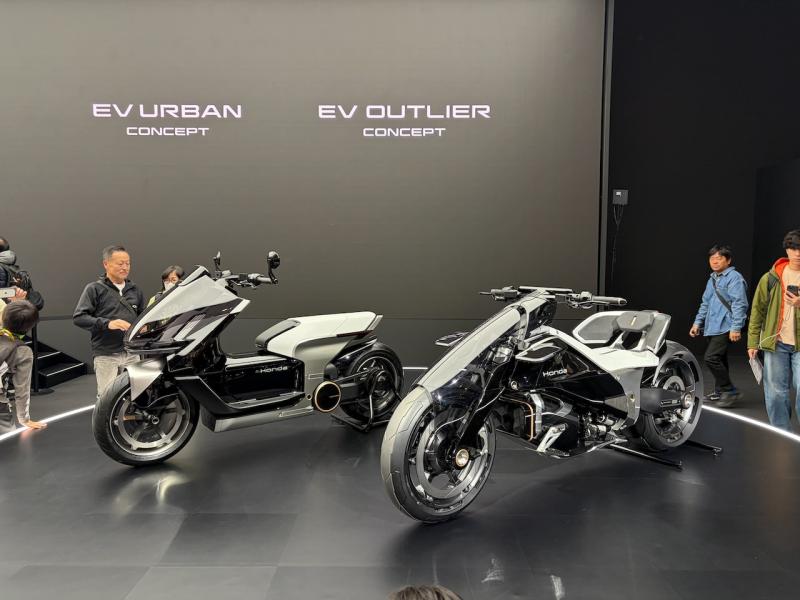
Honda's multimodal transportation vision was evident in its non-automotive displays, including the BF350 V-8 outboard engine, concept boat, interior display of the Honda Jet Elite 2, and a sustainable rocket project. This expansive approach positioned Honda not as a car company but as a comprehensive mobility provider spanning land, sea, air, and space.
Nissan's Resilience Amid Corporate Challenges
Despite facing significant corporate challenges in 2025, including the breakup of the proposed Honda-Nissan merger and the closure of the Oppama plant, Nissan maintained a strong public presence at JMS 2025. The company's manga-themed exhibit attracted large crowds eager to see Nissan's latest innovations.
The headlining debut was the all-new fourth-generation Nissan Elgrand, a premium minivan featuring Japanese-craft-inspired design, e-POWER hybrid drivetrain, and e-4ORCE all-wheel drive. Set for Japan launch in summer 2026, the Elgrand represented Nissan's continued commitment to its home market despite global restructuring.
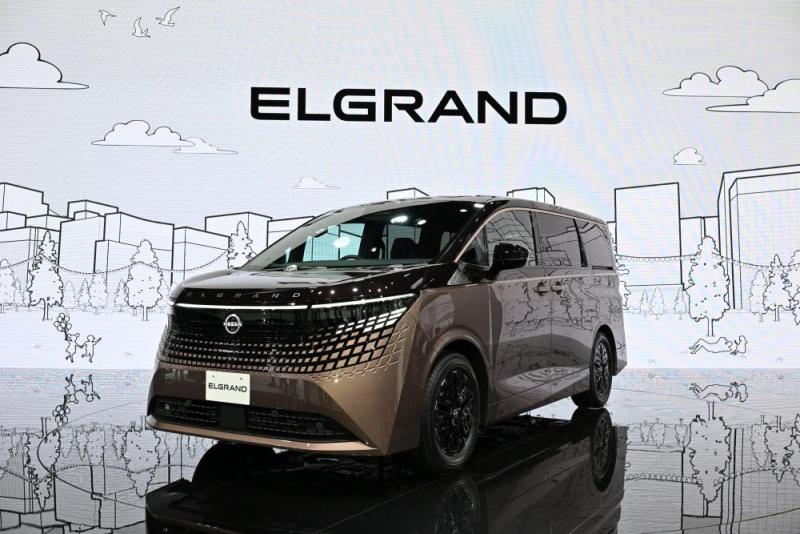
Other significant Nissan showcases included:
Next-generation Nissan Leaf - reimagined with broader appeal and enhanced driving technology
Refreshed Nissan Ariya EV crossover with improved suspension tuned for Japanese roads
Nissan Patrol and X-Trail Rock Creek Edition representing the brand's adventure-ready lineup
K-car Ruks targeting Japan's important micro-vehicle segment
Notable by its absence was Sony Honda Mobility, which did not exhibit at JMS 2025 despite previous appearances. This absence raised questions about the joint venture's current strategic direction and product development timeline.
Mazda's Bet: Carbon Neutrality and Empathetic AI
Mazda’s presence at JMS 2025 was marked by the world premiere of two visionary concept models: the MAZDA VISION X-COUPE and the MAZDA VISION X-COMPACT. The VISION X-COUPE is a crossover coupe featuring a plug-in hybrid system that combines a two-rotor rotary turbo engine with a motor and battery system, delivering 510 horsepower and a range of up to 800 km. What makes this model especially interesting is its use of microalgae-based carbon-neutral fuel combined with Mazda’s proprietary CO2 recovery technology, enabling the car to reduce atmospheric CO2 the more it is driven, a unique step toward sustainable driving that goes beyond traditional emissions reduction.

The MAZDA VISION X-COMPACT, on the other hand, seeks to integrate human sensory data digitized through a “body and sensitivity model” with empathetic AI to deepen the emotional connection between driver and vehicle, emphasizing a human-centric design philosophy.
Alongside these, Mazda showcased the European-spec all-new MAZDA CX-5, featuring the latest “MAZDA E/E ARCHITECTURE+” electronic platform and an upgraded driving experience with plans for integration with advanced AI assistants like Google’s Gemini.
Beyond Automotive: Multimodal Mobility
JMS 2025 demonstrated a clear expansion beyond traditional automotive concepts into broader mobility solutions. Toyota displayed models of their concept sailing catamaran alongside various assisted mobility devices designed for physically impaired users, highlighting the company's vision of universal mobility access.
Honda's non-automotive exhibits included their BF350 V-8 outboard engine, concept boat, eBike and the interior of their Honda Jet Elite 2 business aircraft. Perhaps most ambitious was Honda's sustainable rocket project, signaling the company's interest in space mobility and transport. Honda also showed the UNI-ONE, a personal mobility device that functions as a self-balancing electric unicycle, and the EMTB electric bike prototype for urban commuting.
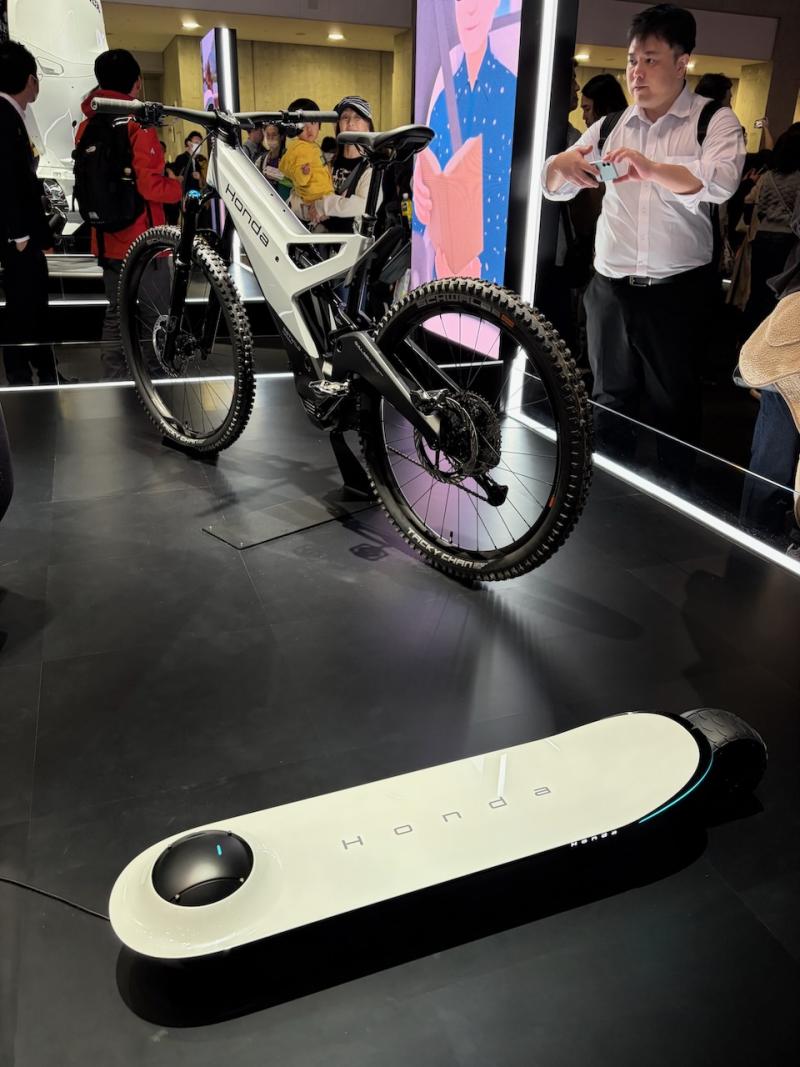
The motorcycle section of JMS2025 featured significant innovations:
Yamaha's updated Motoroid, equipped with artificial intelligence and autonomous technology, allowing it to recognize its owner and interact with them and capable of balancing itself and standing upright without a kickstand
Honda's Rebel 1100S with Dual Clutch Transmission technology
New models from Suzuki, Kawasaki, and Yamaha reinforcing Japan's motorcycle leadership
BMW as the sole non-Japanese exhibitor in the motorcycle section
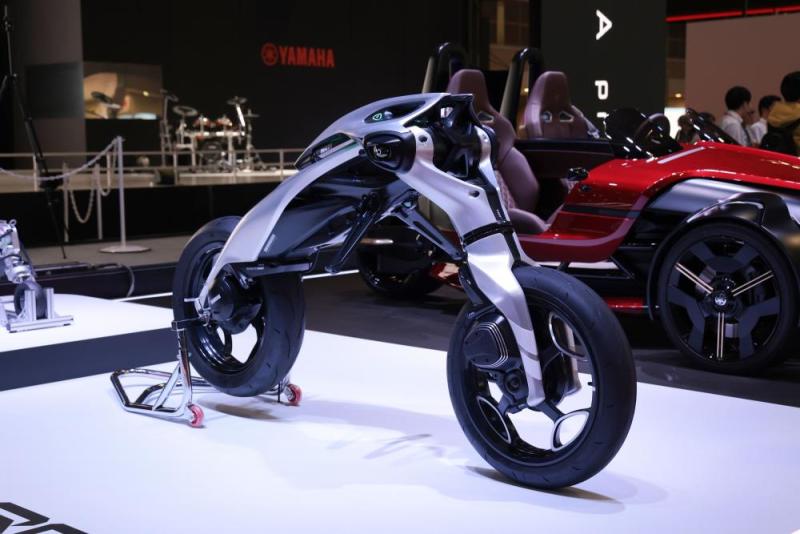
This multimodal approach reflected the Japanese industry's recognition that future transportation needs extend far beyond traditional automobiles. By showcasing marine, aviation, space, and assistive mobility concepts alongside conventional vehicles, JMS 2025 positioned itself as a comprehensive mobility show rather than merely an automotive exhibition.
International Presence and Future-Focused Technologies
While Japanese manufacturers dominated JMS 2025, the limited international presence offered interesting contrasts in approach and priorities. BYD, as the sole Chinese passenger car OEM, presented with the confident theme "BYD as the new normal," showcasing eight vehicles including the Dolphin EV hatchback, Seal cell-to-body EV, Sea Lion, and EV buses featuring their proprietary Blade Battery technology.

Meanwhile, Mercedes-Benz highlighted luxury and electric innovation with the debut of the Vision V electric MPV, advanced new electric models like the CLA and GLC, and exclusive high-performance concepts such as the AMG GT XX and Maybach SL Monogram Series, emphasizing comfort, performance, and futurism.
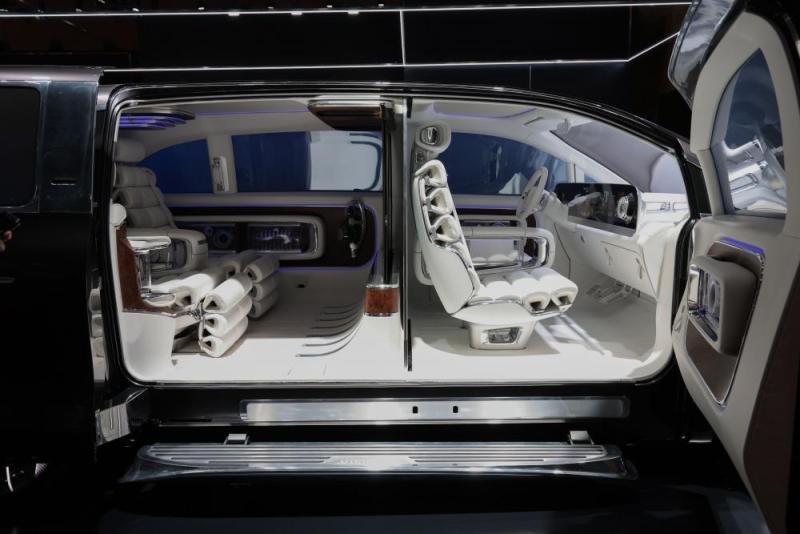
The Mercedes Vision V, a luxury electric MPV concept that seeks to redefine premium chauffeured travel by offering a “private lounge on wheels,” was a standout. Debuted at Shanghai Auto Show 2025, the Vision V features a spacious interior dressed in rich materials like white Nappa leather and burr wood, emphasizing comfort and exclusivity. Technologically, it includes a massive 65-inch retractable 4K cinema screen integrated into the floor, a Dolby Atmos surround sound system with 42 speakers, seven projectors to create a 360-degree immersive digital environment, and a glass partition that can switch between transparent and opaque. The vehicle is designed for passengers to be entertained, work, relax, or socialize while being chauffeured, with multiple digital “modes” such as entertainment, gaming, and even karaoke integrated seamlessly.
On the exterior, the Vision V combines classic Mercedes design elements like a large illuminated three-pointed star and a chrome grille with modern lighting technology, including over 450 three-dimensional illuminated elements serving as taillights and brake lights. It also features automatic sliding doors with illuminated running boards for elegant entry. Built on the Mercedes-Benz VAN.EA electric architecture with an 800V electrical system, the Vision V previews a luxury electric van planned for production around 2026, representing Mercedes’ vision of combining cutting-edge electric mobility with unparalleled comfort and advanced digital innovation.MS2026 is expected to showcase the latest advancements and innovations in embedded systems, edge computing, and IoT development, reflecting cutting-edge technologies and products shaping these rapidly evolving fields. The event will likely emphasize AI-driven analytics, predictive maintenance, and the integration of smart technologies that enhance connectivity and automation. Attendees can anticipate insights into new hardware and software solutions, alongside demonstrations of how these innovations drive efficiency and create new business opportunities across industries. JMS2026 will also likely reflect broader technology trends such as digital transformation, AI acceleration, and energy-efficient computing, making it a crucial platform for industry leaders and innovators to explore next-generation embedded and IoT technologies
The Year Ahead to JMS2026
JMS2026 is expected to showcase the latest advancements and innovations in carbon neutrality, embedded smart mobility systems, edge computing, and IoT development, reflecting cutting-edge technologies and products shaping these rapidly evolving fields.
The event will likely emphasize the evolution of new carbon-neutral fuel systems, AI-driven analytics, predictive maintenance, and the integration of smart technologies that enhance connectivity and automation. Attendees can anticipate insights into new hardware and software solutions, alongside demonstrations of how these innovations drive efficiency and create new business opportunities across industries. JMS2026 will also likely reflect broader technology trends such as digital transformation, AI acceleration, and energy-efficient computing, making it a crucial platform for industry leaders and innovators to explore and plan next-generation embedded and IoT technologies.
Images: Drivetech Partners, JMS & JAMA
